Shiraz, located in the heart of Iran’s Fars Province, offers a mesmerizing blend of ancient heritage and modern vibrancy. The city’s roots can be traced back to the dawn of civilization, as evidenced by Elamite clay tablets from 2000 BCE, and it witnessed a transformation under the patronage of illustrious dynasties like the Sasanians and Umayyads.
But Shiraz’s allure extends far beyond its storied past. Known affectionately as the “city of poets, literature, and flowers,” it invites travelers from across the globe with its enchanting gardens and orchards, epitomized by the picturesque Eram Garden.
It’s no wonder luminaries like Hafez and Saadi, celebrated poets of Iran, found inspiration amidst its verdant landscapes. So pack your bags, and let Shiraz unveil its secrets as you start an adventure like no other.

Ready to immerse yourself in the rich culture and history of Iran? Join us on a captivating Shiraz tour and unlock the secrets of this vibrant city! Explore ancient sites, try delicious cuisine, and experience the warmth of Persian hospitality. Book your Iran tour package now and plan an unforgettable journey!
Nasir al-Mulk Mosque
The Nasir al-Mulk Mosque, also known as the Pink Mosque, represents traditional architecture in Shiraz, Iran. Constructed during the Qajar dynasty, it is adorned with extensive colored glass on its facade, showcasing intricate craftsmanship.
Its design, including the Panj Kase pattern, reflects traditional elements of Persian architecture. Construction began in 1876 under the order of Mirza Hassan Ali Nasir-ol-Mulk and was completed in 1888, with contributions from architects such as Mohammad Hasan-e-Memar and Mohammad Hosseini Shirazi.


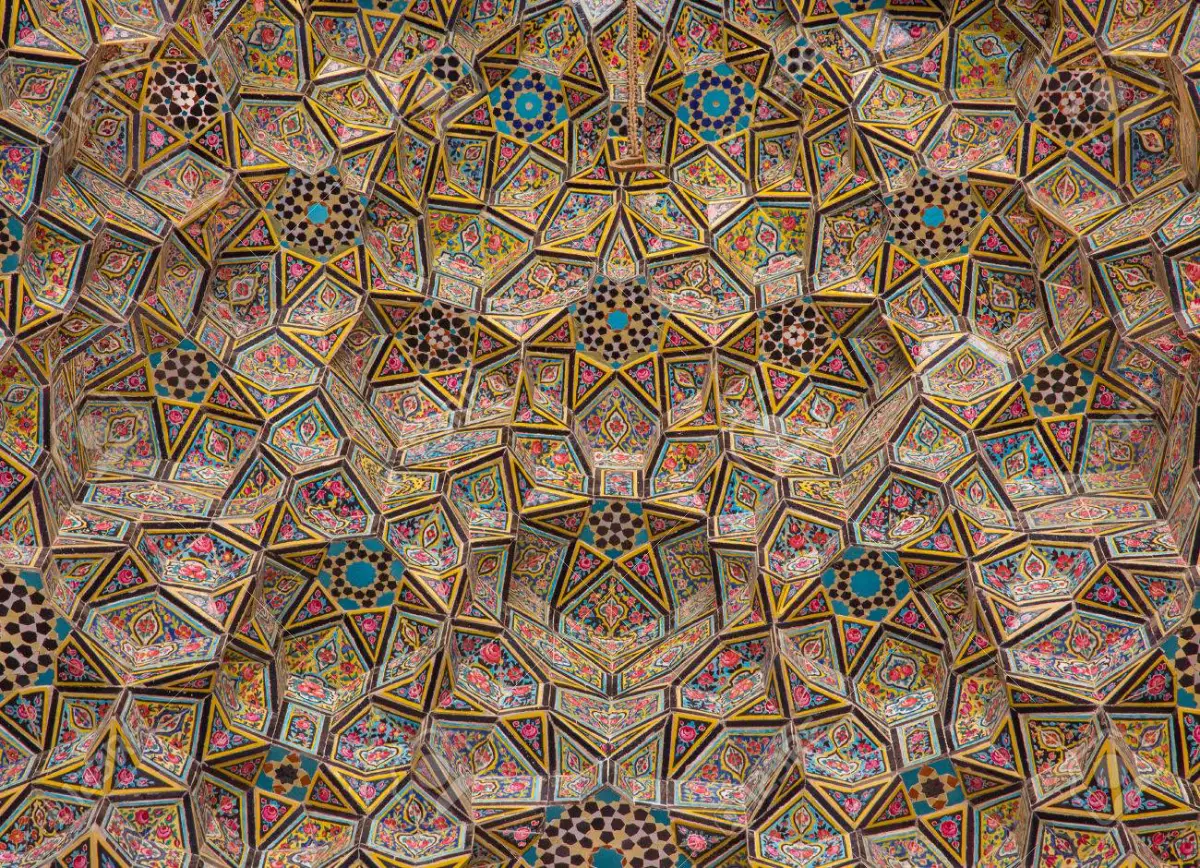
Tomb of Hafez
The Tomb of Hafez, known locally as Hafezieh, comprises two memorial structures erected in memory of the revered Persian poet Hafez. Situated in the Musalla Gardens on the northern edge of Shiraz, these pavilions house the marble tomb of Hafez.
Originally built in 1452, the present buildings, designed by French architect André Godard, were constructed in 1935. Hafez, a prominent figure in Iranian literature, holds a significant place in the hearts of the people of Shiraz. The tomb, surrounded by gardens and other memorials, remains a popular tourist attraction in the city.
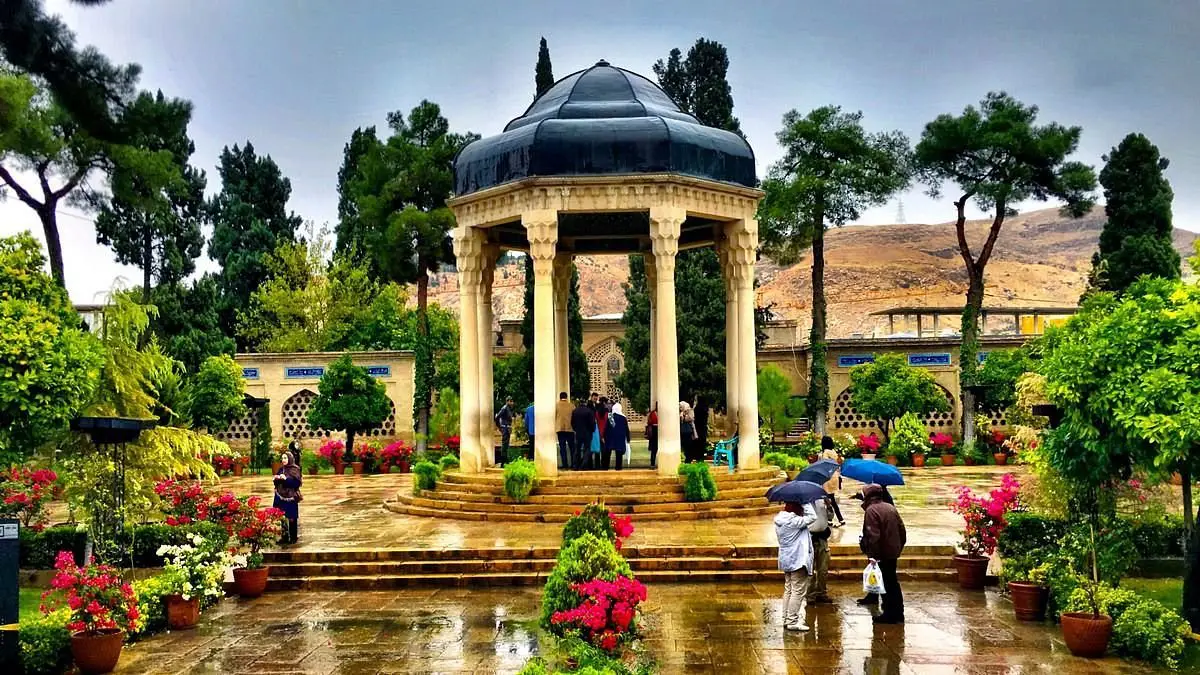
Eram Garden (Baq e Eram)
Eram Garden, or Bagh-e Eram, is a historic Persian garden in Shiraz, Iran, offering visitors a glimpse into the region’s rich botanical heritage. Established in 1824 by Muhammad Qoli Khan Ilkhani, this garden features a three-story residential pavilion and lush greenery, making it a serene retreat.
The current pavilion, rebuilt between 1875 and 1897 by architect Muhammad Hasan, exemplifies Qajar-era architecture. Today, Eram Garden is open to the public as part of the Shiraz Botanical Garden and is recognized as a UNESCO World Heritage Site.
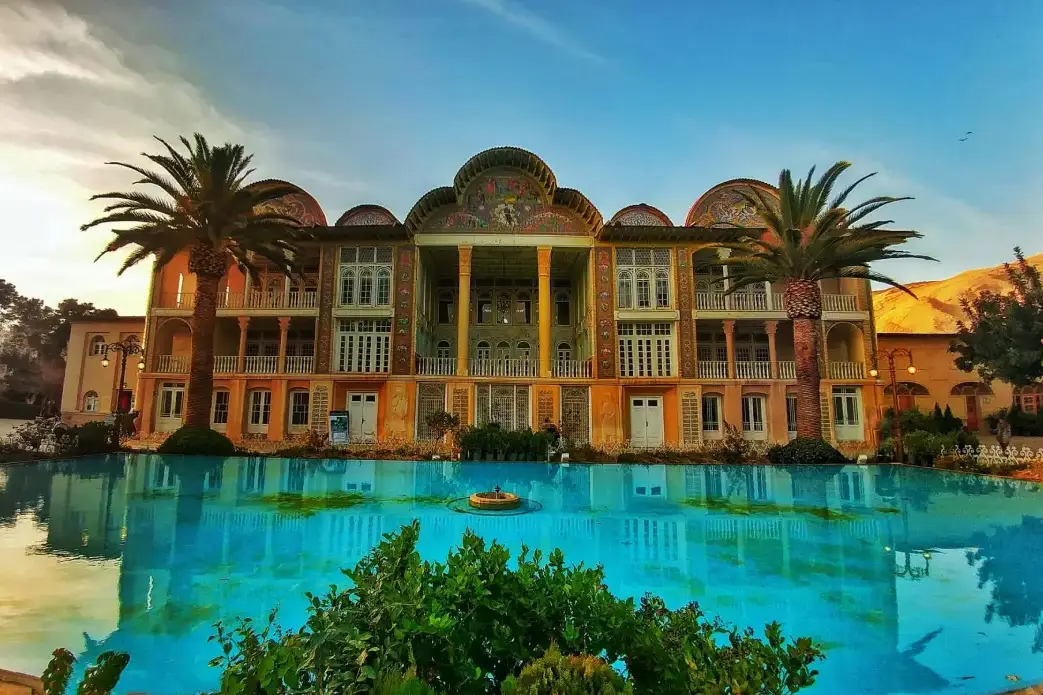
Shah-e-Cheragh Shrine
Shah-e-Cheragh Shrine, a place of pilgrimage and architectural splendor, houses the tomb of Imam Reza’s brother. Initially constructed by Atabak Sa’ad Ebn-e-Zangi, this funerary monument underwent multiple renovations over the centuries.
Adorned with intricate mirror work, stucco inscriptions, and silver-covered doors, the shrine captivates visitors with its ornate design. Two short minarets flank the columned portico, adding to the grandeur of the Mausoleum. Registered as a national monument of Iran, the Shah-e-Cheragh Shrine remains a revered site for Shiite pilgrims worldwide.

Vakil Bazaar
Vakil Bazaar, an architectural marvel from the 11th century, shows Shiraz’s vibrant trading history. Commissioned by Karim Khan, this bustling marketplace offers an authentic glimpse into the city’s commercial past. Spread over a vast expanse of 21,840 square meters, its vaulted brick ceiling adds to its aesthetic charm and regulates the temperature, providing a comfortable environment year-round.
Beyond its historical significance, Vakil Bazaar remains a hub of activity, where locals and tourists can immerse themselves in the vibrant atmosphere, explore traditional goods, and indulge in the rich tapestry of Persian culture. From spices to rugs and handmade crafts to delectable sweets, the bazaar offers a sensory feast that captures the essence of Shiraz.
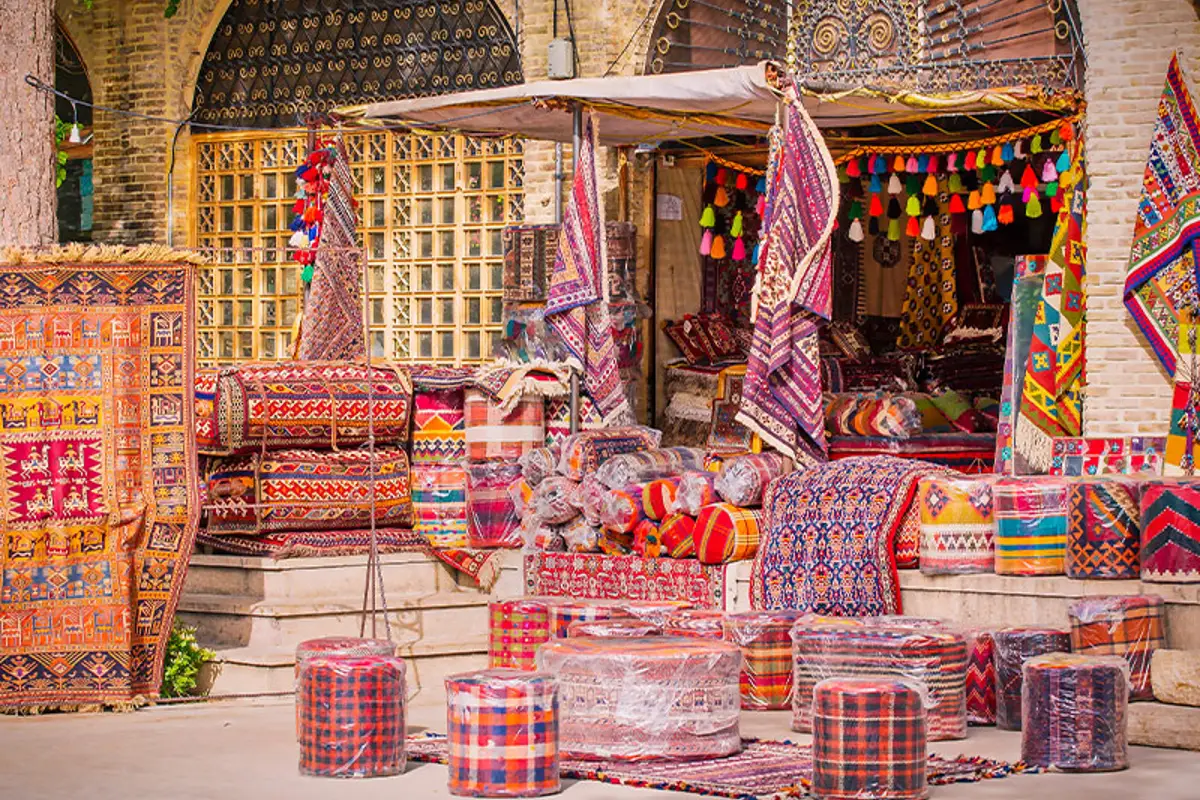
Qavam House
Narenjestan, or Qavam House, represents the opulence of the Qajar era in Shiraz. Dating back to the 19th century, this magnificent mansion boasts exquisite architecture adorned with intricate mirrors, paintings, and tilework, reflecting the grandeur of its time.
Spread across 3,500 square meters, its sprawling grounds and elegant interiors offer a glimpse into the lavish lifestyle of the Qajar nobility. From its ornate southern wing to the stunning mirror hall at its center, every corner of Narenjestan exudes a sense of luxury and refinement, inviting visitors to step back in time and experience the splendor of Persian heritage.
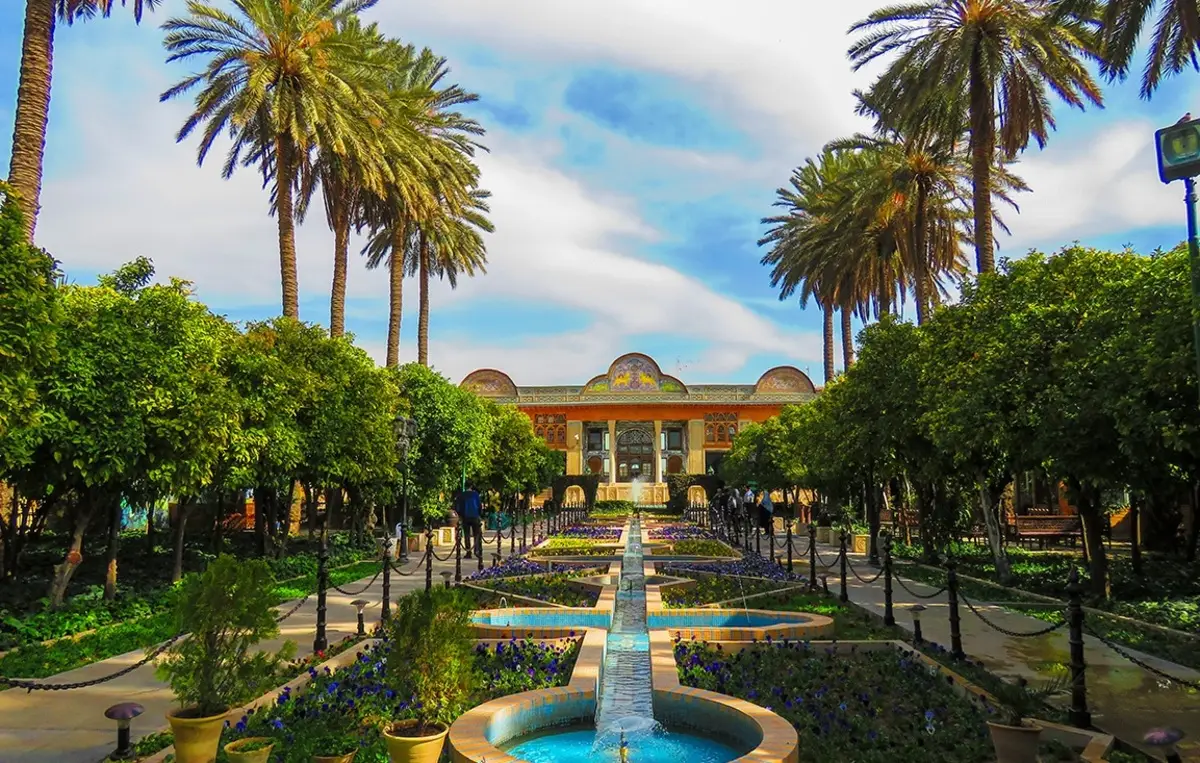
Tomb of Saadi
The Tomb of Saadi, located amidst serene gardens, pays homage to one of Persia’s most beloved poets, Saadi. Constructed in 1942, this octagonal mausoleum with its azure dome is a timeless tribute to Sa’di’s enduring legacy.
Adorned with inscriptions of his poignant verses, the tomb exudes an aura of tranquility and reverence, inviting visitors to reflect on the poet’s timeless wisdom and teachings of unity and compassion. Surrounded by lush greenery and a tranquil pond, the tomb offers a peaceful retreat where visitors can immerse themselves in Sa’di’s timeless verses and find solace amidst the beauty of nature.
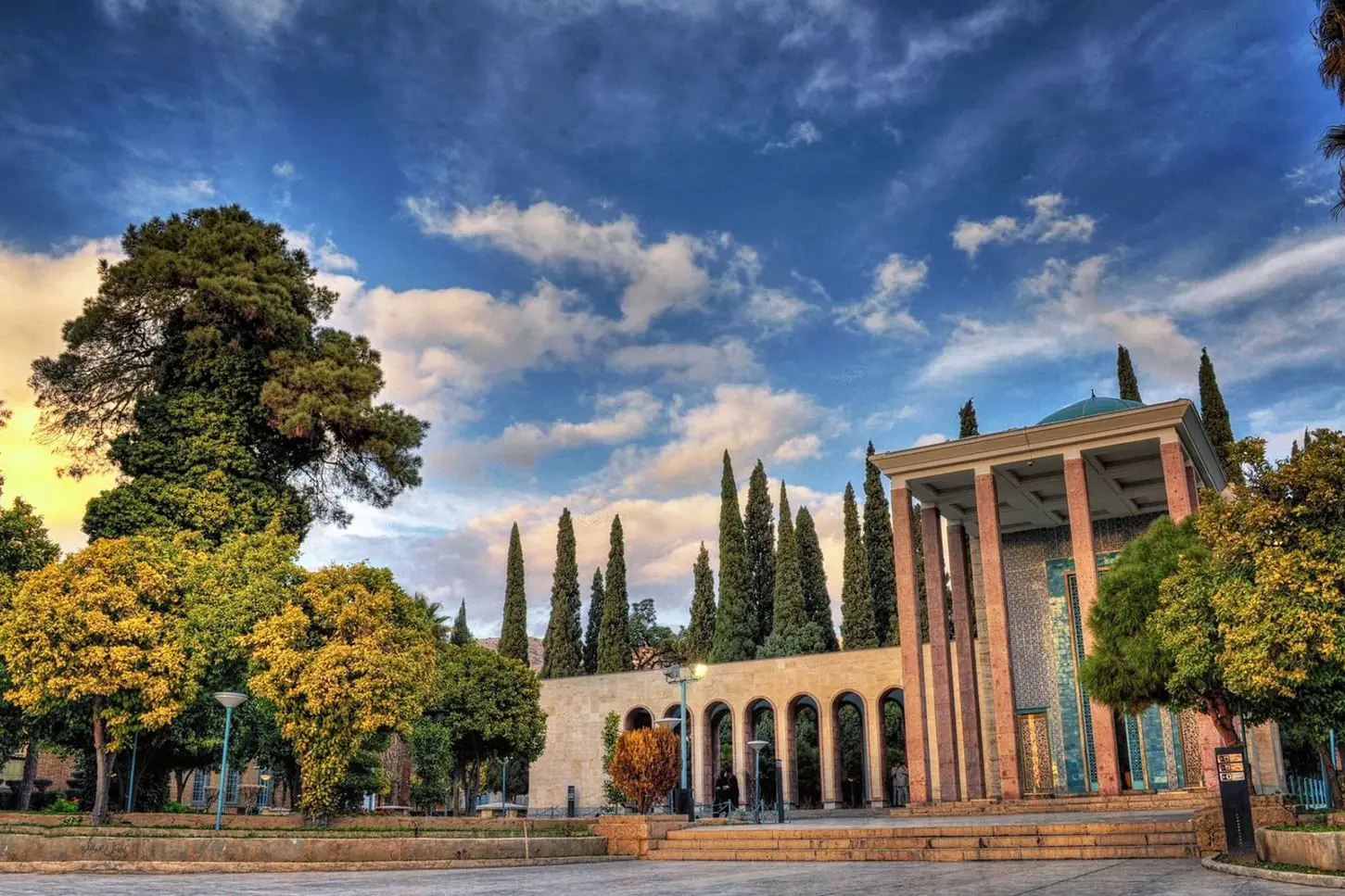
Afif-Abad Garden
Afif-Abad Garden, situated within the affluent district of Afif-Abad in Shiraz, showcases Iran’s rich history and exquisite craftsmanship. Spanning approximately 127,000 square meters, this historical gem was commissioned by Mohammed Khan Qavamol-Molk in 1863 and evolved from a Safavid palace to a cultural hub open to the public.
Its two-story mansion, adorned with intricately carved marble fireplaces and vibrant flora and fauna paintings, serves as a gateway to an era of opulence and grandeur. The garden’s allure extends beyond its architectural marvels; it embodies the essence of Persian artistry, with meticulously landscaped gardens showcasing the mastery of floral arrangements. Visitors stroll through its corridors and are transported through time, unraveling the layers of history woven into every corner of this botanical paradise.

Zinat ol Molk House
Zinat ol Molk House, located next to the historical Narenjestan Qavam, shows the grandeur of the Qavam family during the Qajar era. Originally belonging to Lady Zinat Al-Moluk, daughter of Qavam Al-Molk the Fourth, this architectural marvel boasts intricate designs and a rich history. Constructed between 1911 and 1923, its traditional Persian architecture, including the iconic octagonal vestibule known as “Hashti,” reflects elegance and functionality.
With its captivating mirror hall and underground wax museum showcasing famous figures of Fars province, Zinat Al-Moluk House offers a glimpse into Shiraz’s cultural tapestry. Located in the city’s heart, it is close to other attractions, such as Nasir Al-Molk Mosque and Karim Khan Citadel, making it an ideal starting point for exploring Shiraz’s heritage.

Karim Khan Citadel
Karim Khan Citadel, once the majestic residence of Karim Khan-e-Zand and his dynasty, now stands as a symbol of Shiraz’s rich history and architectural prowess. Built in 1697 and renovated throughout the centuries, this citadel features imposing brick walls and four towering structures at its corners. Originally serving as a royal residence and later as a prison, it is now undergoing restoration to become a museum.
Its interior, adorned with marble, plasterwork, and Shirazi-style paintings, reflects the opulence of the Zand period. The citadel’s vast courtyard, with fountains and gardens, offers a tranquil escape from the bustling city. Within its premises lies a tea room and a bathhouse, echoing the luxury once enjoyed by royalty. With its historical significance and architectural splendor, Karim Khan Citadel invites you to delve into Shiraz’s storied past.

Ali Ibn Hamzeh Holly Shrine
As you venture into Shiraz, a city brimming with cultural and historical treasures, the Ali Ibn Hamzeh Holly Shrine shows the city’s rich heritage. Constructed in the 19th century to honor the revered figure of Ali Ibn Hamzeh, the shrine holds a sacred place among Shia Muslims. Legend has it that Ali Ibn Hamzeh sought refuge in Shiraz, only to meet a tragic end at the hands of soldiers.
Today, the shrine boasts exquisite architectural features, including stained glass windows and delicate wooden doors. Its dazzling dome adorned with intricate mirror work is a sight to behold, especially at night. A tranquil courtyard with a picturesque fountain invites you to soak in the serene atmosphere and reflect on centuries of history and faith.

Saraye Moshir
Located near the bustling Vakil Bazaar, Saraye Moshir, also known as Moshir Caravanserai, offers a glimpse into Shiraz’s vibrant past as a hub of trade and commerce along the Silk Road. Dating back to the Qajar era, this rectangular-shaped caravanserai has undergone restoration to preserve its architectural splendor.
Today, it is an exhibition hall showcasing local handicrafts, providing a window into Iran’s rich cultural tapestry. As you wander through its rooms and chambers, you’ll be transported back in time, imagining the merchants and travelers who once traversed its halls. Saraye Moshir represents the enduring legacy of the Silk Road and its role in shaping Shiraz’s history.
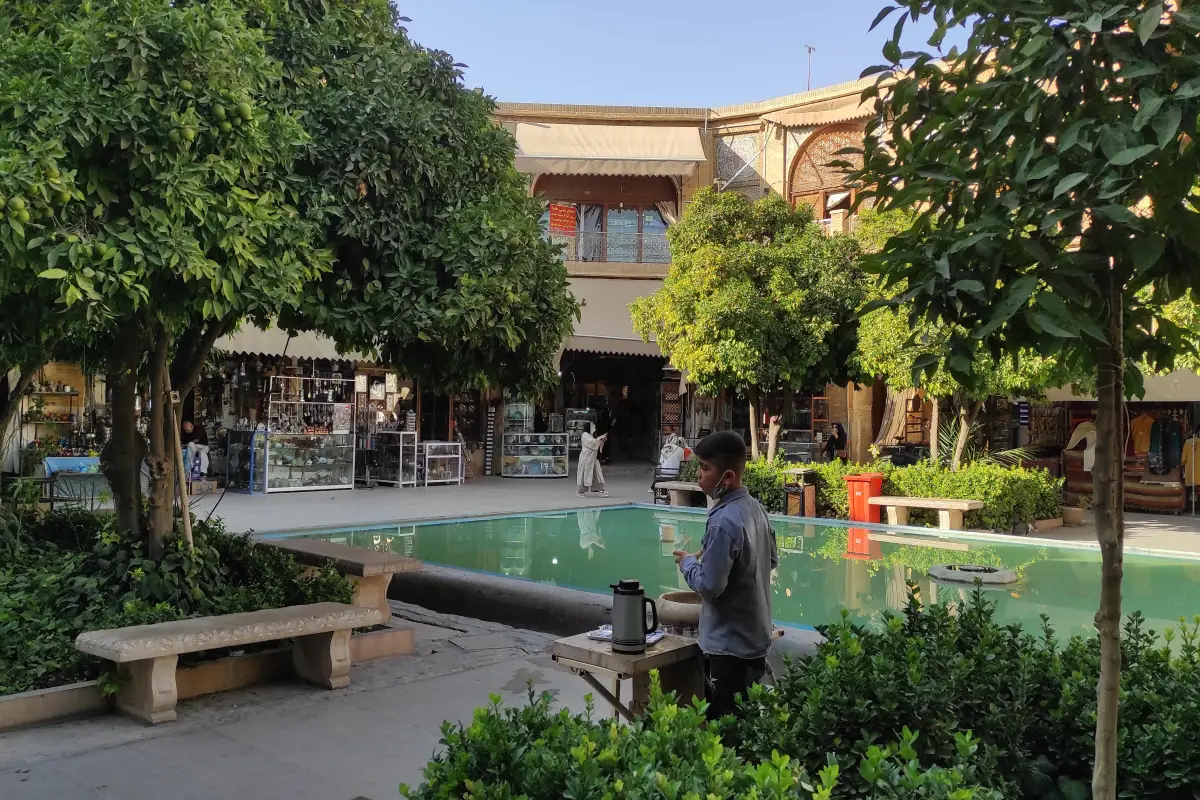
Delgosha Garden
Amidst the historic sites of Shiraz lies Delgosha Garden, a verdant oasis steeped in pre-Islamic history. Dating back to the time of the Sassanians, this sprawling garden offers respite from the bustling city life.
With its lush landscapes spanning 7.5 hectares, Delgosha Garden beckons visitors to explore its tranquil paths and scenic vistas. As you stroll amidst ancient trees and fragrant blooms, you’ll feel a sense of tranquility wash over you, connecting with nature in a way that transcends time.
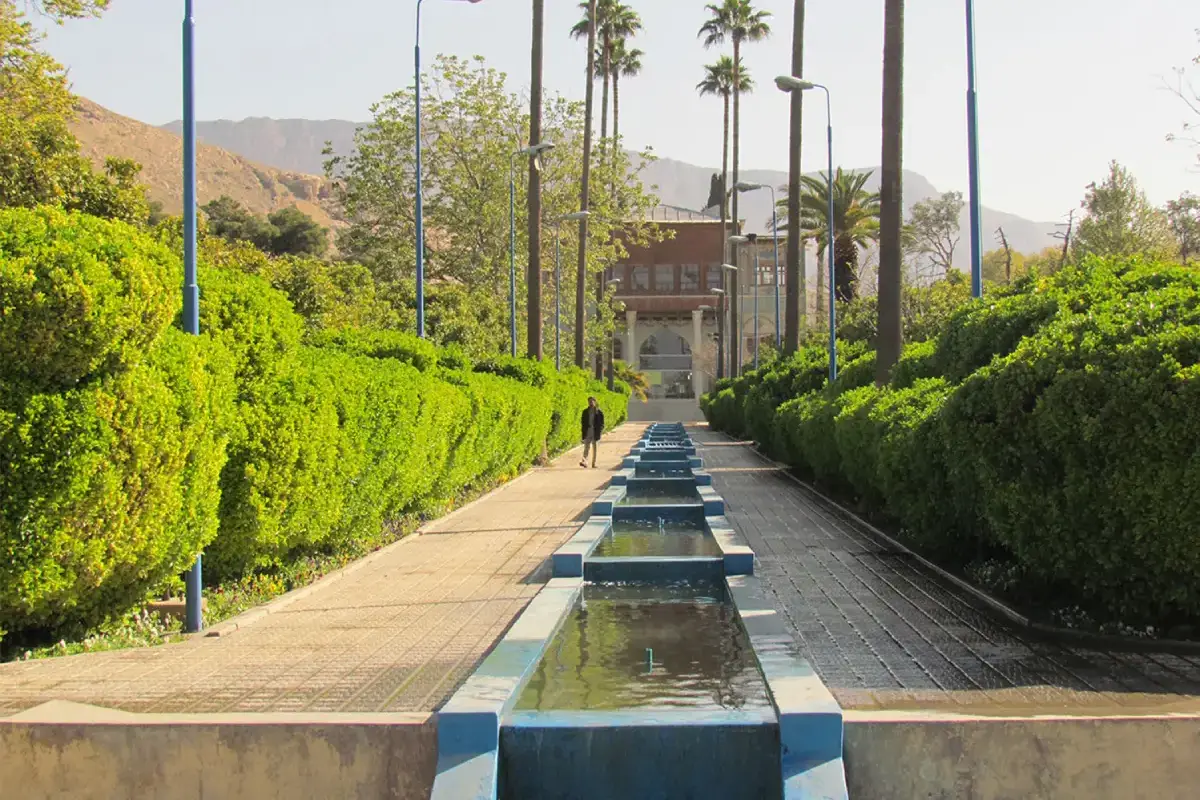
Bagh-e Jahan Nama
Jahan Nama Garden, a jewel of Shiraz’s architectural landscape, offers a glimpse into the city’s storied past. Dating back to the Zand era, this enchanting garden is a testament to the ingenuity of Persian garden design.
Bordered by orange trees and cypresses, its four broad avenues converge on an octagonal stone pavilion, a testament to the garden’s symmetrical beauty. Adorned with colorful tile work and surrounded by fragrant flowers, Jahan Nama Garden invites you to immerse yourself in its timeless charm, reflecting on centuries of artistry and craftsmanship.
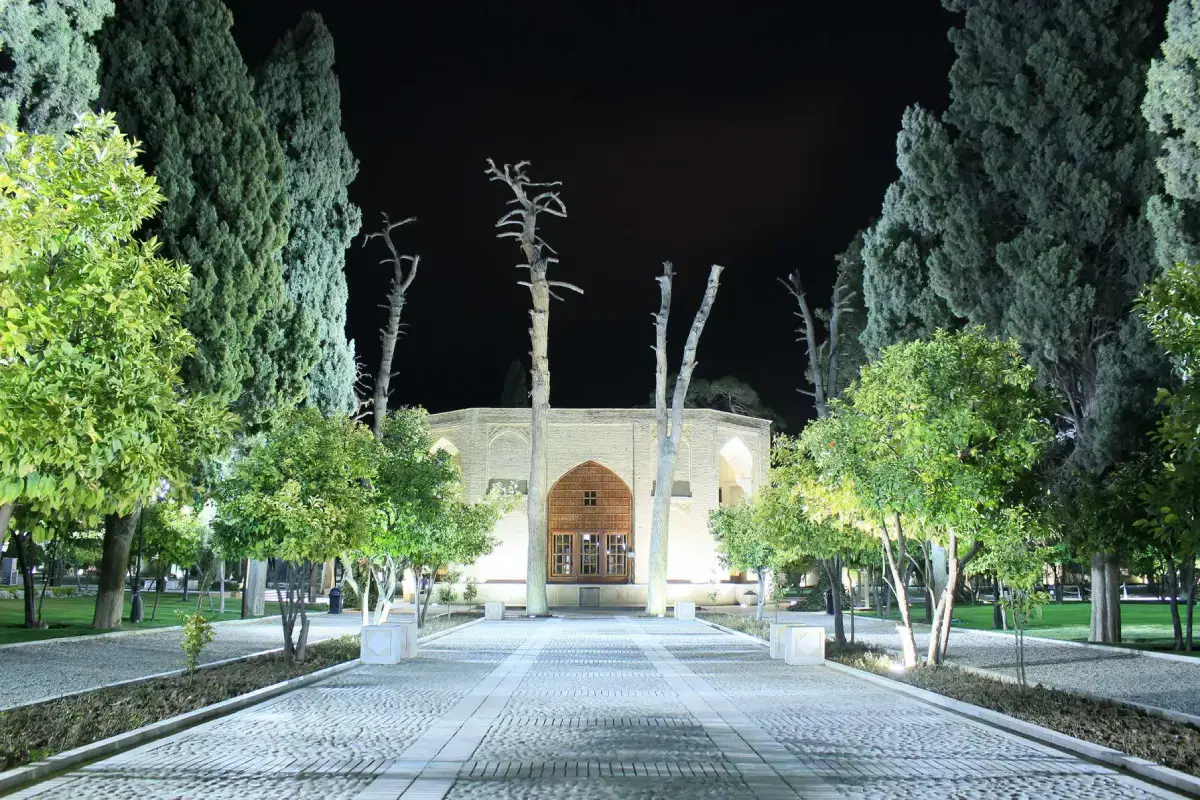
Qur’an Gate
As you approach Shiraz’s northern entrance, you’ll be greeted by the iconic silhouette of Qur’an Gate, a symbol of the city’s spiritual heritage. Built during the Buyid Dynasty, the gate is adorned with verses from the Quran, offering protection to travelers passing beneath its arch.
Despite facing destruction over the centuries, including earthquakes and renovations, Qur’an Gate is a testament to Shiraz’s resilience and faith. Illuminated by night, its majestic presence leaves an indelible impression, inviting you to contemplate the intersection of history, culture, and faith.
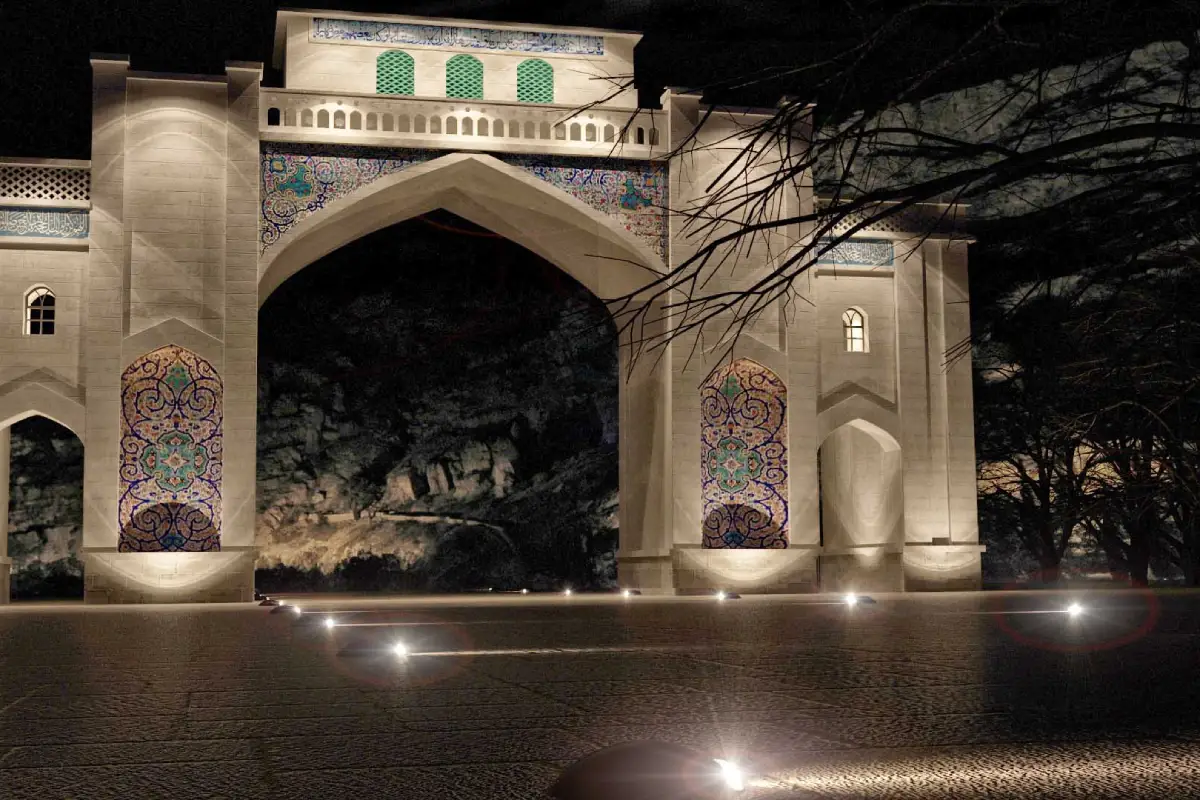
The Tomb of Khaju Kermani
Adjacent to Qur’an Gate lies the Tomb of Khaju Kermani, a tribute to the esteemed Persian poet of the 13th century. Born in Kerman province and laid to rest in Shiraz, Khawju Kermani’s legacy lives on in the verses inscribed on his tomb.
Surrounded by two columns and adorned with delicate latticework, the tomb invites contemplation and reflection. As you pay homage to this literary luminary, you’ll be reminded of poetry’s enduring power to transcend time and place, connecting generations across centuries.
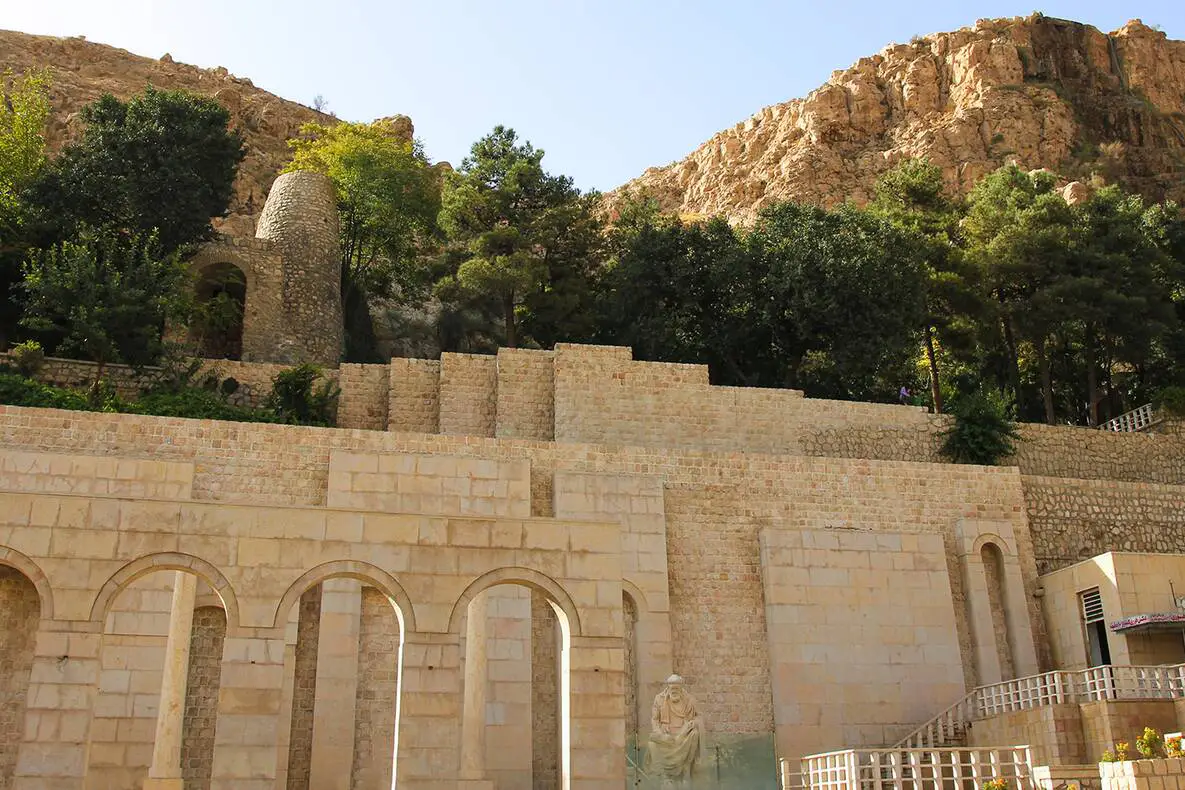
Pars Museum
As you delve into the captivating city of Shiraz, a visit to the Pars Museum, housed within the Kolah Farangi pavilion, offers a fascinating journey through history. Originally constructed in the Nazar Garden during the Zand era, this architectural marvel was repurposed into a museum in 1852 and has since undergone meticulous restoration work. Upon entering, you’ll uncover many historical artifacts, including eleven remarkable paintings by the esteemed artist Aqa Sadeq.
You’ll find yourself drawn to the intricate decorations adorning the octagonal structure, from elaborate tiles depicting floral patterns to vibrant portrayals of birds and flowers. As you meander through the museum’s corridors, you encounter various objects reflecting Shiraz’s rich cultural heritage, from ancient manuscripts to exquisite armor and weaponry. Be sure not to overlook the final resting place of Karim Khan Zand, nestled within the pavilion, serving as a poignant reminder of the city’s royal lineage.
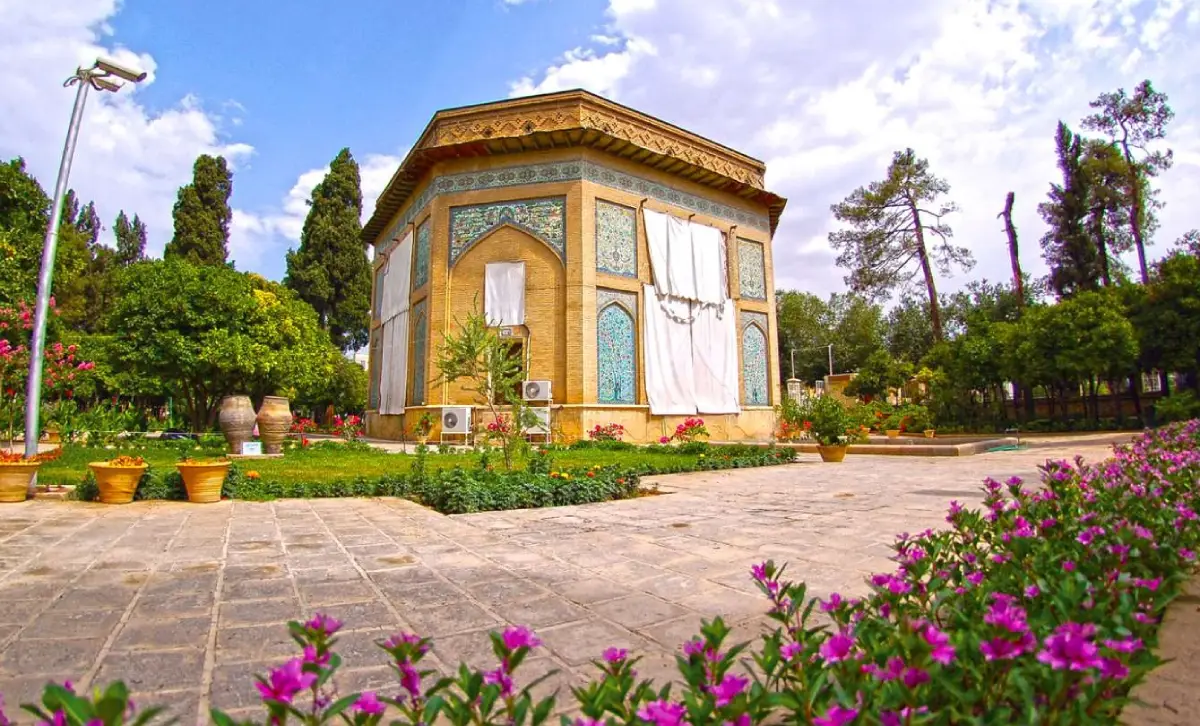
Persepolis
Persepolis, also known as “Takhte Jamshid,” showcases the ancient Achaemenid Empire, including a vast ceremonial complex that echoes the empire’s magnificence. Located just 10 kilometers north of Marvdasht and 57 kilometers from Shiraz, this architectural marvel sprawls across 125,000 square meters atop the Rahmat hill, bearing witness to centuries of history and intrigue.
Built during the reign of King Darius I and completed under King Ardeshir I, Persepolis remains a testament to the empire’s power and influence, serving as a hub for international affairs and grand ceremonies. The craftsmanship and ingenuity of the Achaemenid Empire are displayed throughout Persepolis. Every detail reflects the empire’s cultural richness and hospitality, from the monumental Gate of All Nations, adorned with intricate carvings and inscriptions, to the lotus flower motifs symbolizing the Persian goddess Anahita.
As you explore the ruins of Persepolis, you’ll marvel at the advanced engineering techniques employed by its builders, from the ingenious “Dom Chelcheleh” fastenings that held the structure together to the intricate carvings adorning its walls. Each palace, from the opulent Apadana Palace to the intimate Queen’s Palace, tells a story of the empire’s grandeur and sophistication, inviting you to step back in time and experience the majesty of ancient Persia.
From its humble beginnings in the 6th century BC to its eventual decline, Persepolis shows the enduring legacy of the Achaemenid Empire, offering visitors a window into one of the greatest civilizations in history.

Book a Shiraz Tour with Visit Our Iran
Shiraz offers a captivating journey through time with various historical sites and architectural wonders. From the tranquil gardens like Eram Garden and Delgosha Garden to the majestic tombs and shrines such as the Ali Ibn Hamzeh Holy Shrine and the Tomb of Khawju Kermani, every corner of Shiraz tells a story of its rich past and vibrant present.
To experience the wonders of Shiraz for yourself, consider booking a tour with Visit Our Iran. Our experienced support team can help you plan the perfect itinerary, ensuring you make the most of your time in this enchanting destination. Contact our support team today to plan your Shiraz tour and start an unforgettable experience.
